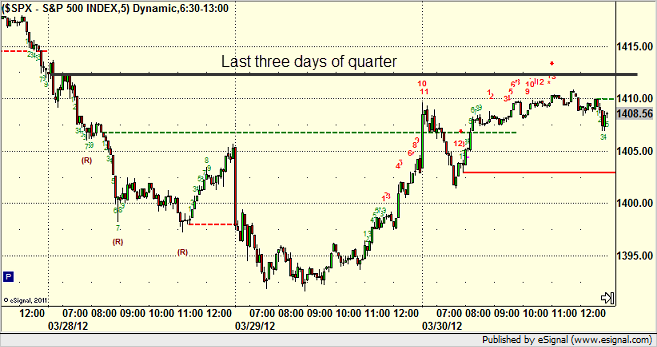One of the features of the end of a quarter is known as “window dressing.” Funds and institutions are measured by their performance and holdings from quarter to quarter, more than they are from month to month. What this means is that as we approach the last few days of the quarter, the funds have to do final adjusting on their positions so that they show the number of shares that they want. For example, if a stock has performed badly during a quarter, they want to show less on the books. If a stock has performed well, they want to show more.
But the funds have such large positions that they can’t just buy and sell enough shares on the last day to get themselves where they want to be. They spend the days and even weeks leading up to the end of the quarter positioning themselves. Once they have done this, there is less buying and selling to be done until the quarter actually ends and statements print. In addition, they want the prices to be stable after they have set their shares.
What we have seen over time is that this leads to a 3-day phenomenon known as “window-dressing.” The net of these three days is often nothing at all as the big players have nothing left to do.
Here is a look at the last 3 and a half days of the quarter, ending last Friday, on the S&P 500 index, in 5 minute bars. Note that I’ve drawn a flat line from the close on Tuesday, and we closed almost exactly at that same price on Friday:

Classic window dressing. Something to be aware of next quarter if you weren’t already.
